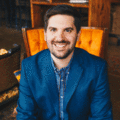
When someone like me — a procrastinator — was trying to settle on a name for this new clinic it was quite a process. For me to love it, the name itself had to communicate how I practice and also stand the test of time — it couldn’t be trendy today and out of style in eight years. After hours and hours of thought and an extensive list of options and variances, my wife and I landed on Lincoln Performance and Sports Medicine (LPSM, @sportsmedlincoln). Even though it can be a bit of a mouth full, it hits on my goal and encompasses the scope of possibilities of this practice.
We’ve already dug into “performance,” so now I’ll address “sports medicine.”
med·i·cine
the science or practice of the diagnosis, treatment and prevention of disease. In technical use, often taken to exclude surgery.
sports med·i·cine
a branch of medicine that deals with physical fitness and the treatment and prevention of injuries related to sports and exercise.
My vision for this practice is to be truly comprehensive when it comes to the diagnosis, treatment and prevention of issues within the musculoskeletal system. By far the majority of those issues come from doing something physical — sports, exercise or occupational athletics of some kind.
To me, “sports medicine,” encompassed the scope of issues related to movement and resonates with folks who take their movements seriously and are willing to work to perform their best.
Let me give you some examples.
By far one of the biggest issues in musculoskeletal care is back pain — nearly 80% of our population will experience back pain in their lifetime.
From my 10 years of experience, significant drivers of back pain range from lifting weights as a professional athlete to cycling from cornfield to cornfield as a weekend warrior to lifting parts as an employee on an assembly line to whipping out emails as a desk jockey.
The only difference among these is some have access to an athletic training room and most don’t. As a former college athlete and athletic training major myself, there were very few athletes who didn’t spend some time in the training room. While some of those were from a trauma, many times it was from the pure repetition of the required movements of the sport — the same type of repetition an occupational athlete such as a factory line worker will deal with year in and year out.
I tell many of my patients who are weekend warriors or occupational athletes to think of our time together as a visit to the training room — the same as Tom Brady preparing his body for the season and maintaining it during the season.
And back pain is just one example of the sports medicine side of what I do here. My “training room” deals with everything from the head to the foot — from vertigo to plantar fasciitis.
In fact, as someone who constantly asks the question, “why,” it actually isn’t uncommon for something like balance issues to cause symptoms like plantar fasciitis — thus the comprehensive vision I have here.
And it is that comprehensive vision that led to not including “chiropractic” in the name of this practice. Yes, my doctorate is a doctorate of chiropractic, but the thousands of hours I have spent studying neuroscience, physical therapy, etc., are far beyond traditional chiropractic manipulations and traditional chiropractic philosophies.
Patients are sometimes surprised to wrap up a treatment without having received an adjustment from me. Adjustments should be only one tool in the toolbox of a conservative care practitioner.
I practice physical medicine, not just stereotypical chiropractic medicine. If we are really going to help the highest percentage of people, we have to be obsessive about learning how the human musculoskeletal system functions from all aspects. While I can never guarantee a 100% improvement in every case that I evaluate and treat, I can guarantee dedication and effort to never stop learning and bringing my best.
Just like athletes of all kinds.

DR. TYLER IDEUS
Contact Me



